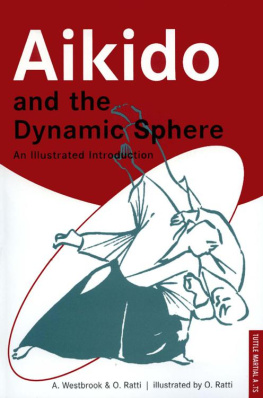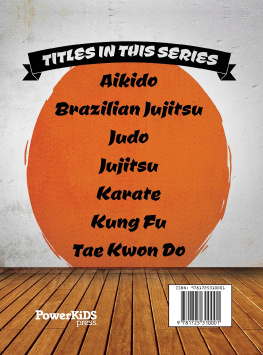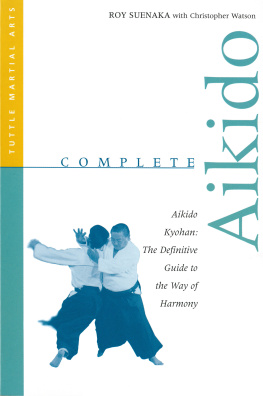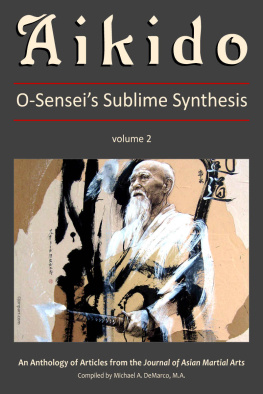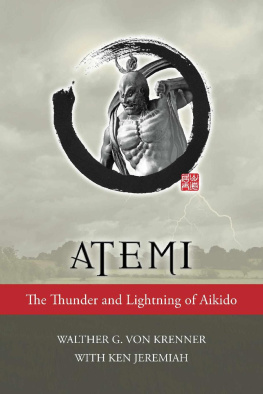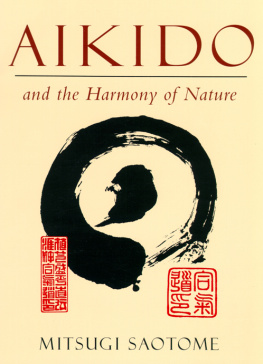Aikido and the
Dynamic Sphere
AIKIDO
AND THE
DYNAMIC SPHERE
An Illustrated Introduction
by A. Westbrook and O. Ratti
Illustrations by O. Ratti
TUTTLE PUBLISHING
Tokyo Rutland, Vermont Singapore
Disclaimer: Please note that the publisher and author(s) of this instructional book are NOT RESPONSIBLE in any manner whatsoever for any injury that may result from practicing the techniques and/or following the instructions given within. Martial Arts training can be dangerousboth to you and to othersif not practiced safely. If you're in doubt as to how to proceed or whether your practice is safe, consult with a trained martial arts teacher before beginning. Since the physical activities described herein may be too strenuous in nature for some readers, it is also essential that a physician be consulted prior to training.
Published by Tuttle Publishing, an imprint of Periplus Editions (HK) Ltd., with editorial offices at 364 Innovation Drive, North Clarendon, Vermont 05759 U.S.A.
Copyright 1970 Charles E. Tuttle Publishing Co., Inc.
All rights reserved. No part of this publication may be reproduced or utilized in any form or by any means, electronic or mechanical, including photocopying, recording, or by any information storage and retrieval system, without prior written permission from the publisher.
Library of Congress Catalog Card Number: 69016180
ISBN: 978-1-4629-0754-0 (ebook)
Distributed by:
North America, Latin American & Europe
Tuttle Publishing
364 Innovation Drive
North Clarendon, V T 05759-9436 U.S.A.
Tel: I (802) 773-8930
Fax: I (802) 773-6993
info@tuttlepublishing.com
www.tuttlepublishing.com | Asia Pacific
Berkeley Books Pte. Ltd.
61 Tai Seng Avenue #02-12
Singapore 534167
Tel: (65) 6280-1330
Fax: (65) 6280-6290
inquiries@periplus.com.sg
www.periplus.com |
Japan
Tuttle Publishing
Yaekari Building, 3rd Floor
5-4-12 Osaki
Shinagawa-ku
Tokyo 141 0032
Tel: (81) 3 5437-0171
Fax: (81) 3 5437-0755
tuttle-sales@gol.com | Indonesia
P T Java Books Indonesia
Kawasan Industri Pulogadung
Jl. Rawa Gelam IV No. 9
Jakarta 13930, Indonesia
Tel: (62-21) 4682-1088
Fax: (62-21) 461-0206
cs@javabooks.co.id |
12 11 10 09 08 14 13 12 11
Printed in the United States of America
TUTTLE PUBLlSHING is a registered trademark of Tuttle Publishing, a division of Periplus Editions (HK) Ltd.
To Master Morihei Uyeshiba
who did not believe his
aikido was for any particular
individual, elite or nation
but for the whole human family.

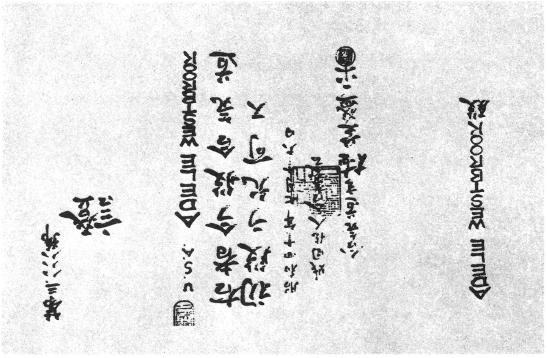
Table of Contents
Acknowledgments
T HE SOURCES of direct and indirect assistance to the authors in the process of collecting the material for Aikido and the Dynamic Sphere are too many to be acknowledged individually here. In the former category, for example, are all those instructors and advanced students of the art, scattered throughout the world, under whose personal guidance the authors explored the practical dimensions of this Discipline of Coordination, or with whom they practiced and corresponded for years. In particular, however, they wish to express their personal gratitude to Yasuo Ohara, who introduced them to aikido for the first time in New York in 1962; to Edi Hagihara, Barry Bernstein, and Virginia Mayhew, who helped them overcome many difficulties during their "apprenticeship" period; to Walter N. Dobson, Motokage Kawamukai, and Yoshimitsu Yamada, who clarified many problems of technical application and style; to Koichi Tohei, chief instructor at Hombu Dojo in Tokyo whoin April, 1965conferred upon them the rank of black belt, 1st degree; and to Kisshomaru Uyeshiba, son of the founder of aikido, who instructed them during his brief visit to New York in 1966.
The authors are not listing individually, by name and rankbut do remain deeply indebted toall those other instructors and advanced students in the United States (from the East Coast to the West Coast, and Hawaii), in Japan, France, Italy, and Belgium who illustrated and explained their particular methods and technical interpretations of aikido, either personally or in lengthy correspondence.
Styles of performance are as many and as unique as the individuals who practice an artaikido being no exception. Each and every one to which the authors were exposed offered them an opportunity to view various aspects of the practice in a new light and to re-examine their own basic premises.
The sources of indirect assistance, invaluable moral support and encouragement include in particular Dr. Elizabeth Richards and Mr. Charles G. Partington; Edward M. Kinney, Edward O'Brien, Anthony Foddai, and Edvi Illes Gedeon.
Finally, the authors wish to express their heartfelt gratitude to all those aikido practitioners with whom they were privileged to practice in the United States, France, and Italy, and to those students at all levels of development who willingly cooperated in the testing and refining of the authors' theories on the tatami in dojo all over the world.
Last, but certainly not least, we wish to express our appreciation to the members of the Editorial and Design departments of the Charles E. Tuttle Company for their patient and painstaking efforts on behalf of Aikido and the Dynamic Sphere.
Preface
I N ORDER to be consistent and have any significance whatsoever, a bookany bookmust have a purpose and a system for achieving that purpose. The primary purpose of Aikido and the Dynamic Sphere is to widen and deepen knowledge of this Discipline of Coordination. In the authors' estimation, the art of aikido contains valuable directives for helping man in his struggle against the age-old predicament represented by that dispersive (and dispersed) condition of physio-functional and psychological lack of coordination which can undermine the very foundation of his character, personality, andeventuallyhis entire well-being. This art also contains an ethical message, a reason why, as well as a means of harmonizing that character and that personality in the sphere of superior development and of coordinating it with the everyday conduct of manin his individual niche, in his society, in his world.
Such a purpose, however, because of its very depth and extension, is extremely difficult (if not impossible) to achieve in a single book. Aikido, in fact, rests upon cultural foundations drawn from the life of Japan in particular, and Asia in general. Its theory is complex and its practice extremely variedboth replete with unexplored possibilities. At best, then, what we have systematically gathered together here can serve only as an introduction to the subject.
Aikido consists of, and may be systematically approached as, theory and practice. Volumes could be devoted entirely to either, and anthologies to both (the Bibliography found at the end of this book indicates a very bare beginning). We were forced to consider whether Aikido and the Dynamic Sphere. should concentrate primarily on the formerthe history, philosophy, ethical motivations of the art, etc.or should deal more specifically with its practice, i.e., its techniques, exercises, and strategies.
Next page
